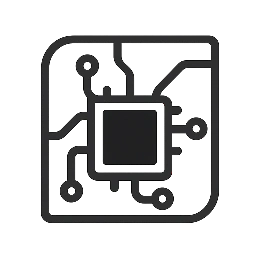Building a scalable IT architecture is like constructing a skyscraper—you need a strong foundation, smart design, and the ability to add floors without risking collapse. In today’s fast-paced digital world, companies need IT systems that can grow seamlessly as demand increases. So, how do you build an IT architecture that scales efficiently without breaking the bank or bogging down your team? Let’s break it down.
Understanding Scalable IT Architecture
What Is IT Architecture?
Simply put, IT architecture is the blueprint of your technology environment. It includes hardware, software, networks, and data management practices that work together to support your business operations. Imagine it as the skeleton of your IT body—it holds everything together.
Why Scalability Matters in IT
Scalability is the ability of your IT system to handle increased loads—whether more users, bigger data volumes, or additional applications—without sacrificing performance. Without scalability, businesses face downtime, slow responses, and lost revenue. Think of scalability as your IT system’s way of “stretching” comfortably when demand grows.
Key Principles of Scalable IT Architecture
Modularity and Decoupling
A modular design breaks the system into independent components. This decoupling means if one part needs an upgrade or replacement, you can do so without affecting the whole system. It’s like building with LEGO bricks—take one out or add new ones without toppling the entire structure.
Flexibility and Adaptability
A scalable IT architecture must adapt to evolving business needs and technologies. Flexibility means your system can incorporate new tools or processes quickly, preventing costly rewrites or overhauls down the road.
Planning Your Scalable IT Architecture
Assessing Current Infrastructure
Before you build, know what you have. Conduct an in-depth audit of your existing IT infrastructure, identify bottlenecks, and note legacy components that might limit growth.
Defining Business Goals and Requirements
Align your IT architecture with your business goals. Whether you plan to expand user base, enter new markets, or support new services, clear requirements help shape your architecture effectively.
Choosing the Right Technology Stack
Cloud vs On-Premises Solutions
Cloud platforms like AWS, Azure, and Google Cloud have revolutionized scalability. They offer on-demand resources and pay-as-you-go pricing. On-premises solutions give more control but often require heavy upfront investments and can be less flexible. Many businesses now adopt a hybrid approach for the best of both worlds.
Selecting Scalable Software and Hardware
Opt for software known for handling scale, like containerized apps or microservices frameworks. On hardware, look for servers and networking equipment that can grow with you, such as those supporting virtualization and easy upgrades.
Designing for Scalability
Horizontal vs Vertical Scaling
Vertical scaling means beefing up one server (adding CPU, RAM), while horizontal scaling means adding more servers to distribute load. Horizontal scaling is generally more flexible and resilient, especially in cloud environments.
Load Balancing and Failover Strategies
To avoid bottlenecks, use load balancers that distribute user requests evenly across servers. Also, set up failover systems to switch traffic automatically to backups if something crashes, ensuring zero downtime.
Building a Microservices Architecture
Benefits of Microservices
Microservices split large applications into smaller, independently deployable services. This approach boosts scalability, speeds up development, and isolates failures. Netflix famously uses microservices to serve millions of users smoothly worldwide.
Challenges and Best Practices
However, microservices add complexity—managing many services, ensuring communication, and monitoring can get tricky. Use API gateways, service meshes, and centralized logging to keep control.
Data Management in Scalable Systems
Choosing Scalable Databases
Traditional relational databases can choke under massive loads. NoSQL databases like MongoDB or Cassandra excel at scaling horizontally and handling big data.
Data Partitioning and Replication
Sharding splits data across multiple servers, improving speed and reliability. Replication creates copies to ensure availability in case one server fails.
Automation and Orchestration
Role of DevOps in Scalability
DevOps practices automate deployment, testing, and monitoring, enabling rapid scaling with fewer errors. Continuous Integration and Continuous Deployment (CI/CD) pipelines are crucial here.
Using Containers and Kubernetes
Containers package applications and their dependencies, ensuring consistency across environments. Kubernetes orchestrates these containers, managing scaling, updates, and resource allocation automatically.
Security Considerations in Scalable Architecture
Securing Distributed Systems
Scaling often means more endpoints and data movement. Employ robust authentication, encryption, and zero-trust models to safeguard your expanding system.
Compliance and Data Privacy
As you grow, compliance with GDPR, HIPAA, or industry-specific regulations becomes critical. Plan your architecture to include audit trails and data protection features from the start.
Monitoring and Performance Optimization
Tools for Real-Time Monitoring
Tools like Prometheus, Grafana, and New Relic give insights into system health and performance, alerting you to issues before users notice.
Capacity Planning and Performance Tuning
Regularly analyze traffic patterns and system load to forecast growth and adjust resources proactively—don’t wait for a crash to act.
Cost Management in Scalable IT
Budgeting for Growth
Scaling can be costly if unmanaged. Forecast expenses, consider cloud cost models, and build budgets that account for peak usage periods.
Optimizing Cloud Costs
Use reserved instances, autoscaling, and cost monitoring tools (like AWS Cost Explorer) to avoid wasteful spending.
Case Studies of Scalable IT Architectures
Netflix’s Microservices Approach
Netflix transitioned from a monolith to microservices, enabling rapid innovation and handling billions of streaming requests daily with near-zero downtime.
Amazon Web Services Scalability Model
AWS pioneered pay-as-you-go cloud infrastructure, empowering startups and enterprises alike to scale instantly without upfront investments.
Common Pitfalls and How to Avoid Them
Over-Engineering the System
Don’t design a rocket ship when you need a car. Overly complex architectures slow development and inflate costs. Start simple, then evolve.
Ignoring Future Growth
Failing to plan for growth leads to costly refactors and outages. Always anticipate future needs and build with flexibility.
Future Trends in Scalable IT Architecture
Edge Computing
Processing data closer to users reduces latency and bandwidth demands—essential for IoT and real-time applications.
AI-Driven Scalability
AI tools can predict traffic spikes and automate resource allocation, making scaling smarter and more efficient.
Conclusion
Building a scalable IT architecture is a strategic journey—not a one-time project. By focusing on modularity, the right technology stack, automation, and proactive monitoring, you set your business up for smooth growth and innovation. Remember, scalability is about flexibility and foresight, not just handling more traffic.
FAQs
1. What is the difference between vertical and horizontal scaling?
Vertical scaling upgrades existing hardware (like adding more RAM), while horizontal scaling adds more machines or nodes to share the load.
2. Why is microservices architecture popular for scalability?
Microservices allow independent scaling of components, faster deployments, and isolation of faults, making systems more resilient and adaptable.
3. How does cloud computing enhance scalability?
Cloud platforms provide on-demand resources, flexible pricing, and automated scaling tools, reducing upfront investments and enabling rapid growth.
4. What role does DevOps play in building scalable IT systems?
DevOps automates deployment, testing, and monitoring, facilitating continuous integration and rapid scaling with minimal downtime.
5. How can I manage costs while scaling my IT infrastructure?
Use cloud cost optimization tools, autoscaling, reserved instances, and regularly review resource usage to avoid unnecessary expenses.

